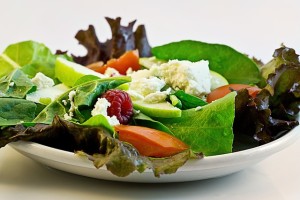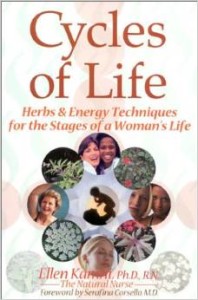
An Overview
Women often develop a myriad of health issues linked to hormone imbalance. Although a majority of these are believed to start in midlife with the onset of menopause, in fact, a dysfunctional pattern can begin during adolescent years or even at a younger age. The severity of hormonal problems tends to increase with age, but this is not simply due to the accumulation of years. In fact, the cumulative physiological effects of a variety of stress mechanisms can cause a disruption of the natural rhythms and balancing mechanisms of women’s hormones, which could be responsible for compromising overall health along with sexual and reproductive wellness. Millions of women continue to experience dysfunctions such as PMS, depression, decreased libido, fibrocystic breasts, food and sugar cravings, uterine fibroids, irregular or excessive uterine bleeding and endometriosis, infertility and more.
Fluctuating estrogen and progesterone levels are commonplace as women age, but during menopause the side effects of these fluctuations – hot flashes, mood swings, decreased libido and memory impairment, to name a few, can be particularly difficult to deal with. The common use in conventional medicine of HRT (Hormone Replacement Therapy) was once believed to be a panacea that would solve many of these problems.
However, there have been disappointing scientific findings concerning the safety and efficacy of hormone replacement therapy. (JAMA, March 2001). The climbing cancer rates are alarming. Also, hormone therapy does not grant the heart protective effect that was previously promised in earlier studies; in fact, it looks as if heart deaths have increased as well as cancer rates in women who have been using HRT. While we are loosing faith in HRT as the answer, menopausal women still have an interest in maintaining youthful vigor, sexual function and mental capacity. Women are becoming more and more interested in finding natural means to bolster or balance hormone levels other than drug based hormone replacement therapy.
Herbs can be a significant part of an overall wellness program that can be instituted towards this end. We will discuss specific herbs that are well-known to be beneficial for women’s wellness, but first let’s focus on the basics- diet and exercise.
Diet and Exercise

An ORGANIC diet, high in dark green leafy vegetables and Omega-3 fatty acids is essential. This is important because pesticides and herbicides cause the accumulation of ‘xenoestrogens’ in the diet. These aggressive and often carcinogenic molecules fit into the estrogen receptor sites and cause many of the health problems that can be traced to estrogen dominance – PMS, infertility, fibroids, menopausal symptoms and most other ‘female issues’.
Another important nutrient is soy, which is known as a mild estrogen regulator. When the phytoestrogens in soy connect to estrogen receptor sites, they block the uptake of the aggressive types of estrogen. When we review the epidemiological evidence of those cultures that enjoy soy-based diets, there’s an incredibly low incidence of menopausal symptoms as well as cancer and other degenerative illnesses.
Like soy, Red Clover is also rich in estrogenic-like compounds. Red Clover is the only plant containing all four major estrogenic isoflavones.
Exercise is of paramount importance. Regular exercise, 30 minutes per day, has a plethora of positive effects including weight control, mood elevation, decreased cholesterol (the bad kind), better digestion, sounder sleeping patterns and tonification of the glands which control hormone levels, to name a few!
Other Helpful Herbs
Black Cohosh (Cimicifuga racemosa) is specifically used for its beneficial effects on menopausal symptoms. The isoflavones in Black Cohosh have been shown to bind to estrogen receptor sites and lower lutenizing hormones, which are linked to hot flashes. Black Cohosh can also help with PMS.
Dong Quai (Angelica sinensis) has been used in Chinese Medicine for thousands of years to help normalize menstrual irregularities. It is also used for anemia and as a systemic strengthener, helping to ‘build the blood’. Dong Quai may increase bleeding, so don’t use it during pregnancy or if heavy periods are a problem.
Chastetree Berry (Agnus castus, Vitex) is one of the most helpful herbs for normalizing symptoms of hot flashes, fluid retention and mild depression.
Wild Yam (Dioscorea spp.) is a traditional root food used by women around the world to help promote women’s wellness, including fertility issues, late periods and menopausal symptoms.
Red Raspberry (Rubus idaeus) has been dubbed ” The Vine of Female Vitality“. The leaf of the vine is the part that is most often used as herbal medicine. The medical journal Lancet published a study as far back as 1941 describing the normalizing effect that Red Raspberry leaf extract had on the uterus. Traditionally, midwives and herbalists claim that it also helped tone the ligaments of the uterus to ease childbirth, reduce hemorrhage after birth and enrich colostrum, the immune-stimulating first milk of nursing mothers.
Ellen Kamhi, Ph.D., R.N.,is the author of Cycles of Life, Herbs and Energy Techniques for the Stages of a Woman’s Life, which explores the topic of women’s wellness in detail. She is also the co-author of The Natural Medicine Chest and Arthritis, Alternative Medicine Definitive Guide. Dr. Kamhi hosts a variety of radio and TV shows which focus on the many aspects of natural medicine. In addition, she is the co-founder of Eco Tours for Cures, which offers travelers the opportunity to experience herbal knowledge and lifestyles of indigenous people.

